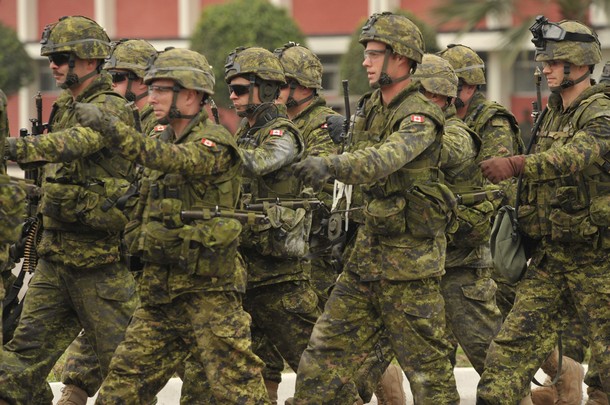
From the Economist: Canada was a big air- and sea-power after the second world war, and deployed combat troops in the Korean war. Since then, however, its forces have focused on peacekeeping. In the 1990s a Liberal government balanced the budget on the back of the army, in what Rick Hillier, a former chief of defence staff, called a “decade of darkness” that left the forces on “life support”. Cuts to ammunition and training hurt morale, as did the disbanding of an airborne regiment, after one of its members killed a Somali civilian in 1993.
[Canada’s Prime Minister Stephen] Harper, a Conservative, has charged to the rescue. He has increased defence spending from C$14.8 billion a year when he took office to C$21 billion. That bought new transport planes and helicopters for the air force, and M-777 howitzers and heavy-armoured transport trucks and engineering vehicles for the army, the better to withstand roadside bombs. (The navy has been less fortunate.) The first Canadian soldiers to arrive in Afghanistan in 2002 wore green camouflage designed for forests, because the army had sold its sand-coloured uniforms. Now they sport desert-hued outfits with a digitalised pattern redesigned for added stealth. …
Mr Harper sees this muscularity as part of a broader effort to “revive Canada’s leadership in the world”, which peaked in the 1950s, when its military power was at its height and Europe was rebuilding itself. It has certainly improved relations with the United States, which soured when the Liberal government refused to join the Iraq invasion. But it has not increased enthusiasm at home for shooting wars. A 2009 poll by Ipsos Reid found that the share of Canadians who think the army should only conduct peacekeeping operations rose from 46% in 2008 to 50% last year.
That scepticism is reflected in Parliament. The Conservatives hold just 144 of the chamber’s 308 seats, and rule largely because the opposition is divided. The Liberals backed a limited extension of Canada’s mission in Afghanistan in 2008, but would probably not do so again. Mr Harper must thus withdraw the troops by July.
Even if he could win support for a new extension, however, the prime minister has recently hinted that fiscal discipline may now trump military ambition. He promises to cut its C$49 billion deficit to $1.8 billion by 2014-15 through spending cuts alone. In August the ombudsman for veterans accused the government of cheating former soldiers by giving them lump-sum disability payments instead of richer lifetime pensions. And its most recent budget would increase defence spending by just 1.5%, a far cry from the 9% average growth in 2006-09. (photo: Getty)
Image: getty%209%2010%2010%20Canadian%20troops.jpg
